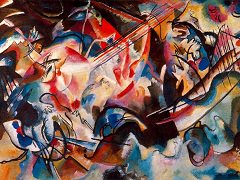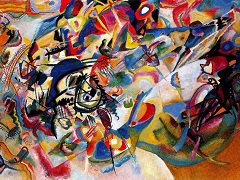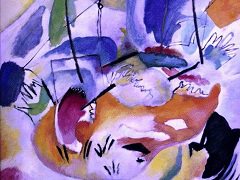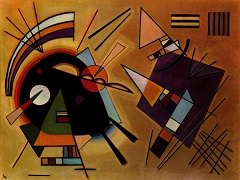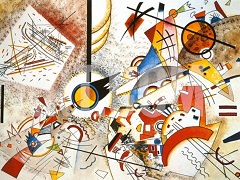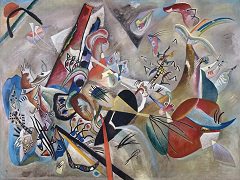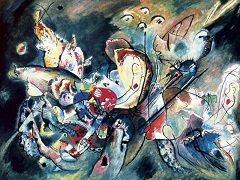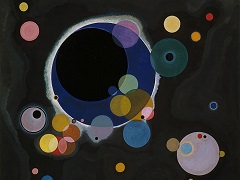Small Pleasures, 1913 by Wassily Kandinsky
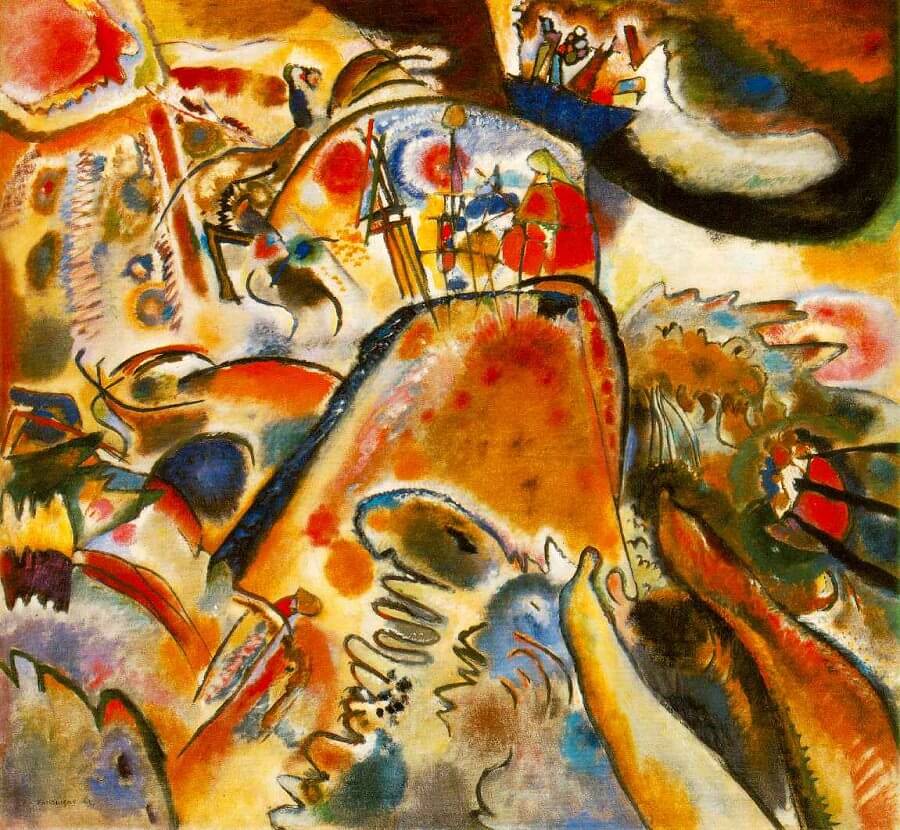
Small Pleasures was preceded by a number of studies and related works, the earliest of which, With Sun appears to date from about 1910. The composition of Small Pleasures is centered round two hills, each crowned by a citadel. On the right-hand side is a boat with three oars which is riding a storm under a forbidding black cloud. To the bottom left it is possible to make out a couple at a steep angle to the hill, and above them three horsemen arrested in full gallop. A fiery sun flashes out wheels of color.
By 1913 Kandinsky's aesthetic theories and aspirations were well developed. He valued painterly abstraction as the most effective stylistic means through which to reveal hidden aspects of the empirical world, express subjective realities, aspire to the metaphysical, and offer a regenerative vision of the future. Kandinsky wanted the evocative power of carefully chosen and dynamically interrelated colors, shapes, and lines to elicit specific responses from viewers of his canvases. The inner vision of an artist, he believed, could thereby be translated into a universally accessible statement.

